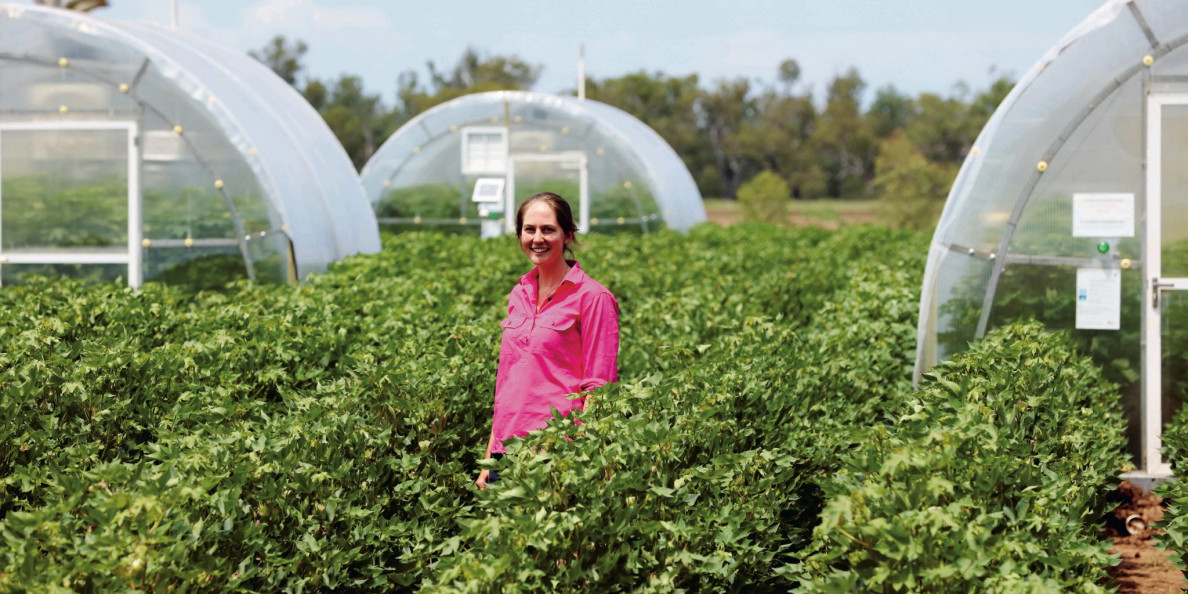Home Textiles Today Staff, September 11, 2018
Canberra, Australia – A team of scientists in Australia has begun work on cotton with many of the properties of synthetics, including being waterproof, stretchable and non-creasing.
“We’re looking into the structure of cotton cell walls and harnessing the latest tools in synthetic biology to develop the next generation cotton fiber,” said Madeline Mitchell, a scientist with the Commonwealth Scientific and Industrial Research Organization (CSIRO), Australia's national science research agency.
CSIRO is growing a variety of cotton plants growing, she said, with both “really long, thin fibers” and “short, woolly” ones that will be applied to the development of a better cotton product as the agency researches the ideal length, strength and thickness of cotton fiber.The goal is to produce a cotton fiber that has the versatility of synthetics, without the issues associated with them, such as the release of microfibers during the washing process that aren’t degradable and build up in the food chain.
The next generation cotton research is part of CSIRO’s Synthetic Biology Future Science Platform, a $13 million investment in science that applies engineering principles to biology. Through more than 30 years of improved cotton breeding using genetically modified techniques, CSIRO and partner Cotton Seed Distributors (CSD) are credited with reducing insecticide use in cotton growing by 85% and cutting herbicide use by 60%.
CSD managing director Peter Graham said there are commercial imperatives as well as environmental ones to the project. “If we can produce next generation cotton, then we can take a large market share of the synthetics industry and that’s a win not just for Australia’s $2.5 billion industry, but also for the environment.”


